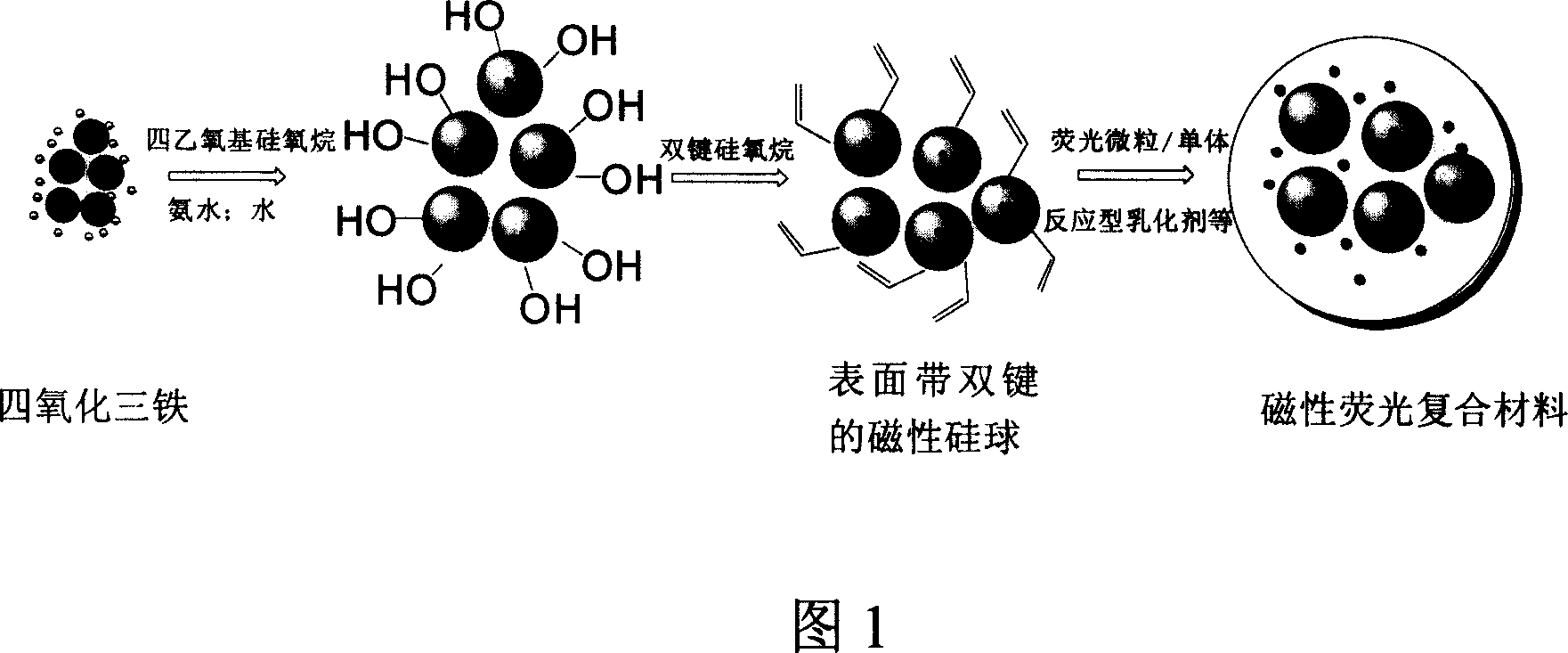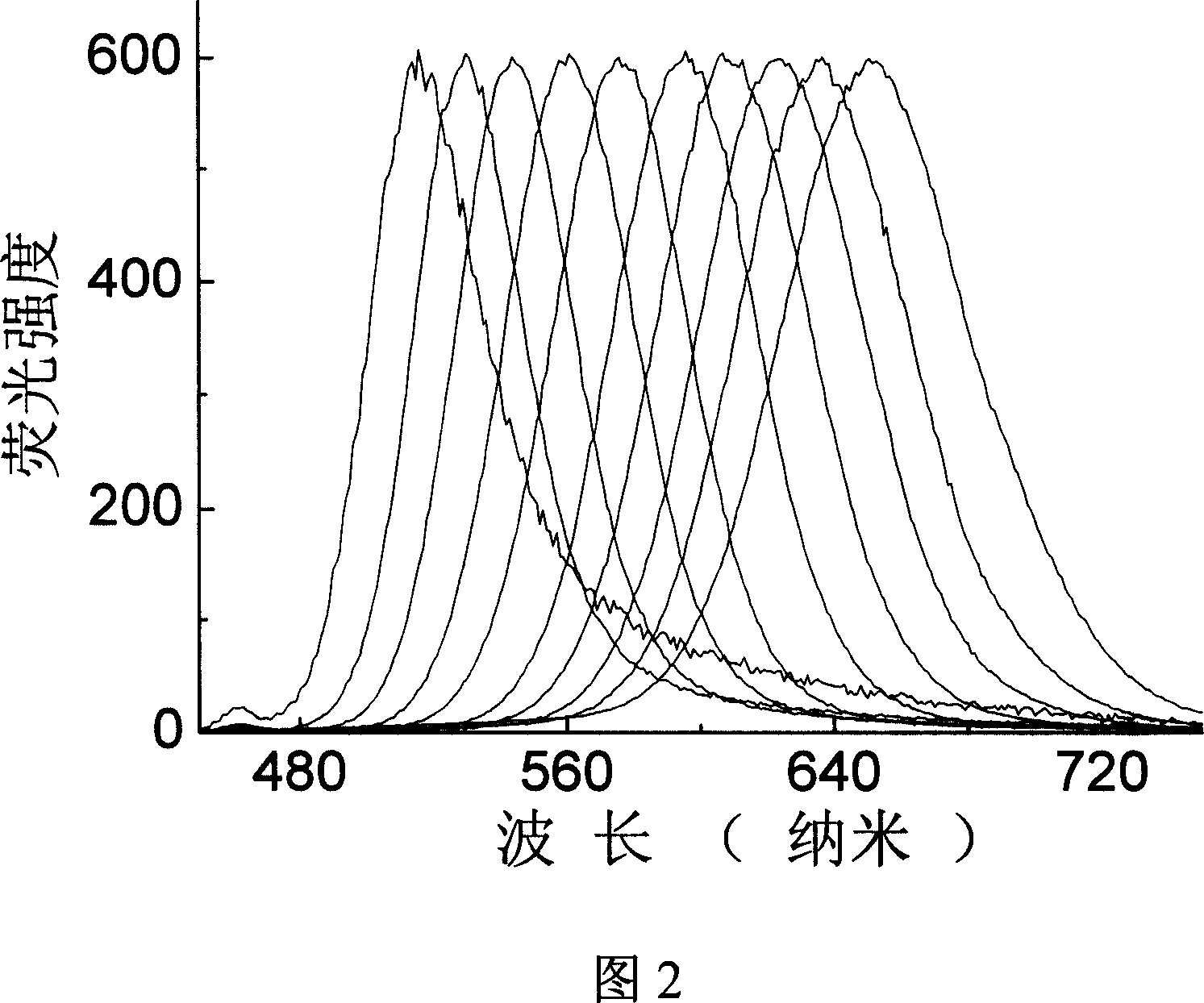Magnetic fluorescent composite material, its preparation method and application
A composite material and fluorescence technology, applied in biochemical equipment and methods, analytical materials, instruments, etc., can solve problems such as doubts about feasibility, reduction of fluorescence brightness of composite materials, and inability to solve problems
- Summary
- Abstract
- Description
- Claims
- Application Information
AI Technical Summary
Problems solved by technology
Method used
Image
Examples
preparation example Construction
[0056] The preparation steps of the magnetic fluorescent composite microspheres involved in the present invention are as follows:
[0057] The preparation process mainly includes four steps, the first three steps are the same as the preparation steps of the magnetic fluorescent composite material, and the fourth step is as follows:
[0058] The reactive surfactant (as an emulsifier) prepared by step (2), the fluorescent nanocrystal / monomer solution obtained by step (3), the magnetic nanoparticles of surface-modified double bonds prepared by step (1) and The oil-soluble initiator is dispersed in the aqueous solution to form an oil-in-water emulsion, reacted at 60-90° C. for 4-7 hours, and centrifuged to obtain magnetic fluorescent composite microspheres.
[0059] The detailed preparation process of the above magnetic fluorescent composite material is shown in Figure 1.
[0060] One of the characteristics of the magnetic fluorescent composite microspheres described in the pre...
Embodiment 1
[0066] Take by weighing 1.315 grams of cadmium perchlorate (Cd(ClO 4 ) 2 ·6H 2 O) Add to 150 milliliters of deoxygenated secondary water, then add 0.55 milliliters of mercaptopropionic acid as a modifier, adjust its pH value to 11.2 with 1 mol / liter of sodium hydroxide solution to form a solution containing mercapto compounds and cadmium ions . On the other hand, inject 30 milliliters of 0.5 mol / liter sulfuric acid solution into a container containing 0.39 grams of aluminum telluride (Al 2 Te 3 ) in the flask, the generated H 2 Put all the Te into the cadmium ion solution, stir for 15 minutes, heat and reflux for 1 minute to 10 days, and obtain an aqueous solution of cadmium telluride fluorescent semiconductor nanocrystals with stable mercaptopropionic acid and a fluorescent emission center wavelength between 430 and 650 nanometers. The fluorescence spectrum is shown in Figure 2.
Embodiment 2
[0068] Take by weighing 1.315 grams of cadmium perchlorate (Cd(ClO 4 ) 2 ·6H 2 O) Add to 150 milliliters of deoxygenated secondary water, then add 0.55 milliliters of mercaptoacetic acid as a modifier, and adjust its pH value to 11.2 with 1 mol / liter of sodium hydroxide solution to form a solution containing mercapto compounds and cadmium ions . On the other hand, get 30 milliliters of 0.5 mol / liter sulfuric acid solution and inject it into 0.26 gram of aluminum selenide (Al 2 Se 3 ) in the flask, the generated H 2 All the Se is passed into the above cadmium ion solution to obtain a cadmium selenide nanocrystal aqueous solution stable with thioglycolic acid.
PUM
 Login to View More
Login to View More Abstract
Description
Claims
Application Information
 Login to View More
Login to View More - R&D
- Intellectual Property
- Life Sciences
- Materials
- Tech Scout
- Unparalleled Data Quality
- Higher Quality Content
- 60% Fewer Hallucinations
Browse by: Latest US Patents, China's latest patents, Technical Efficacy Thesaurus, Application Domain, Technology Topic, Popular Technical Reports.
© 2025 PatSnap. All rights reserved.Legal|Privacy policy|Modern Slavery Act Transparency Statement|Sitemap|About US| Contact US: help@patsnap.com



